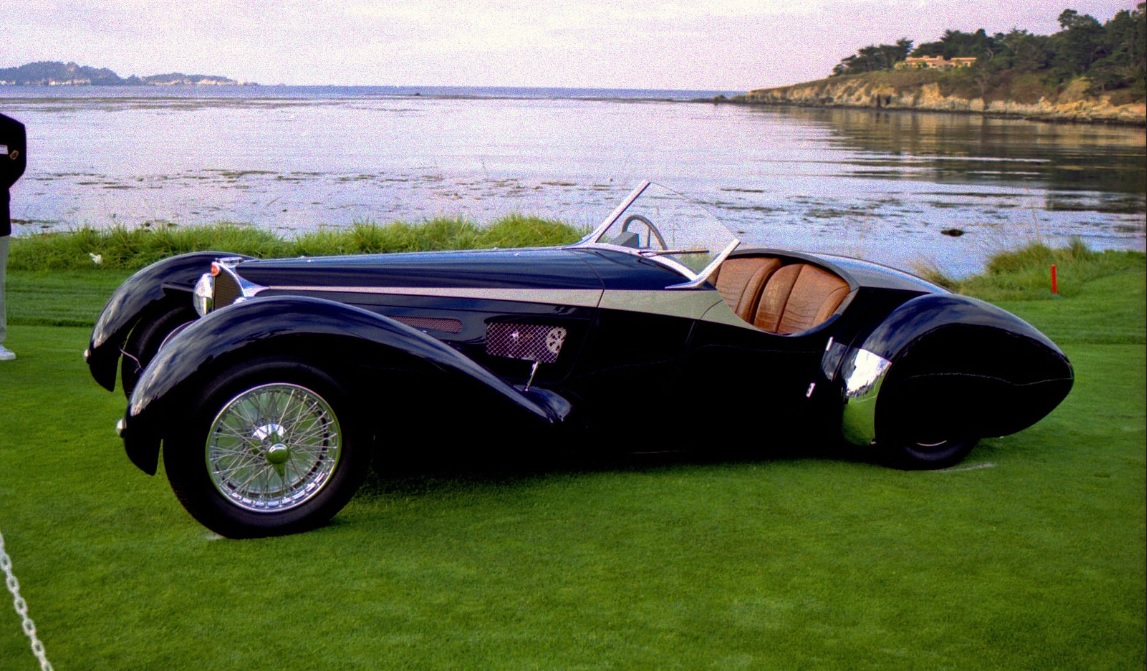1938 Bugatti Type 57SC Corsica Roadster

‘The car sped along at 80mph with the comfort and quietness one associates with the Type 57… We were quite willing to believe that Jean Bugatti has achieved the 435 kilometres to Paris in just under 1½ hours in the Type 57 – an average of 77mph…’ – Motor Sport, May 1939.
By the early 1930s Ettore Bugatti had established an unrivalled reputation for building cars with outstanding performance on road or track; the world’s greatest racing drivers enjoying countless successes aboard the Molsheim factory’s products and often choosing them for their everyday transport. Although Bugatti is best remembered for its racing models, most of the 6,000-or-so cars produced at the Molsheim factory were touring cars of sporting character. Produced from 1934 to 1940, the Type 57 exemplified Bugatti’s policy of building fast and exciting touring cars possessing excellent handling and brakes.
Because of its lengthy run of success, Ettore Bugatti had remained stubbornly committed to his single-cam engine, only adopting the more advanced double-overhead-camshaft method of valve actuation, after much prompting by his eldest son Jean, on the Type 50 of 1930. From then on Jean Bugatti took greater responsibility for design, his first car being the exquisite Type 55 roadster, a model ranking among the finest sports cars of the 1930s. He followed that with a design of equal stature, the Type 57. A larger car than the Type 55, the Type 57 was powered by a 3.3-litre, double-overhead-camshaft straight eight of modern design, derived from that of the Type 51 Grand Prix car, and was housed in Bugatti’s familiar vintage-style chassis. The range showed the strong influence of Jean Bugatti and at last gave the marque a civilised grande routière to match those of rivals Delage and Delahaye.
The Type 57 was the firm’s most popular model and attracted coachwork of the finest quality executed in a startling variety of styles but was no mere rich man’s plaything, as evidenced by two outright wins at Le Mans. Proof, if it were needed, that ancestral virtues had not been abandoned when creating a car fit to rank alongside Rolls-Royce or Bentley. Its success is revealed by the production figures: some 630 examples of all Type 57 models were produced between 1934 and 1940, and the post-war Type 101 was based on its chassis. However, although many Type 57s were fitted with bespoke bodies, the most popular coachwork was built to Jean Bugatti’s designs by the marque’s preferred carrossier, Gangloff of Colmar, just a few miles from the Bugatti works at Molsheim.
